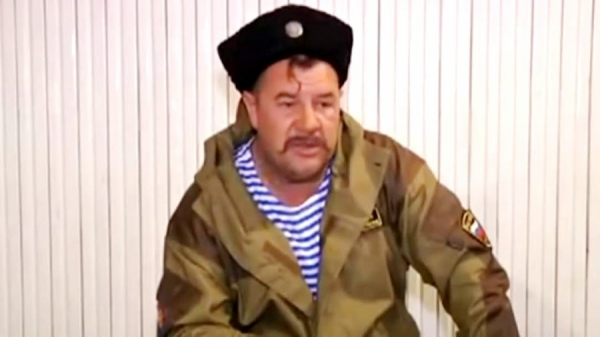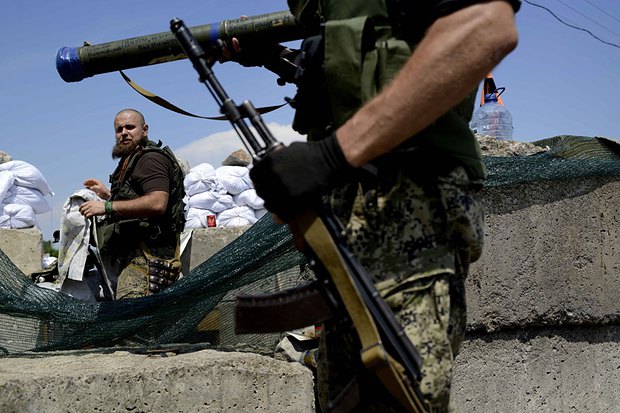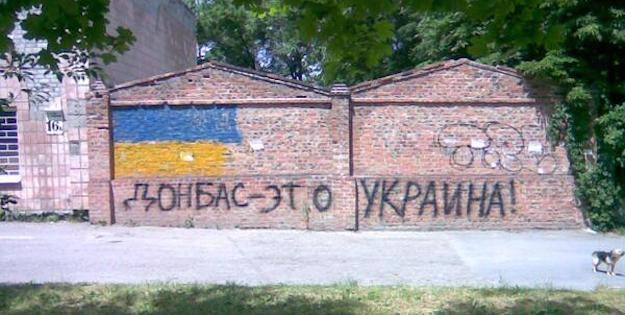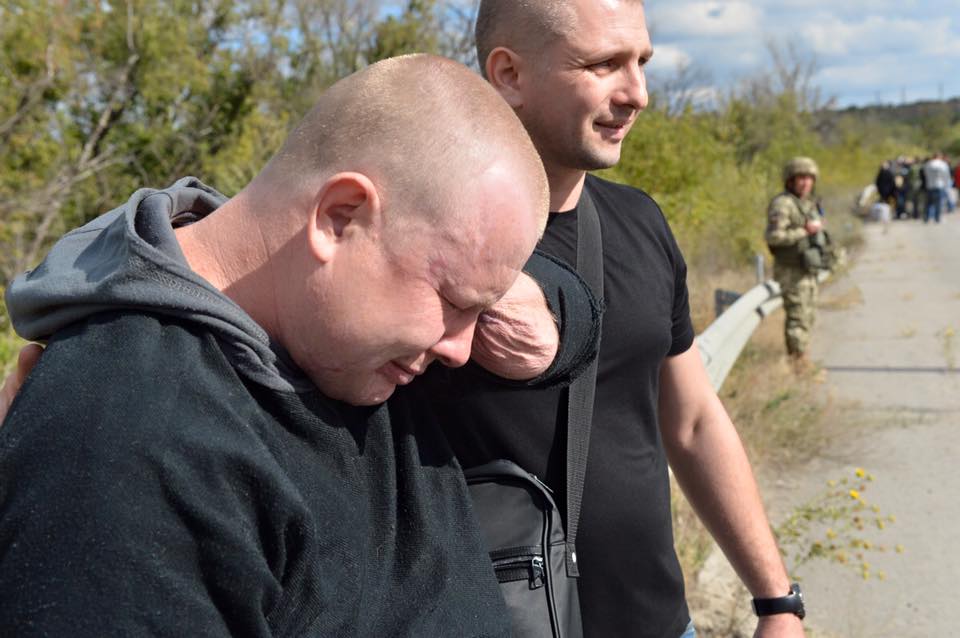The first and the final advertisement in a typical news broadcast goes, “Let’s win in the information war together!” and urges the audience to donate money to the Novorossia TV bank account, located in Russia. Considering that people in Donetsk and Luhansk are not able to donate money because of collapse of regional economy, it does not take a genius to realize that the lion’s share of funds for the “war” comes from Russia.
Anthracite Regional TV
The TV channel is named after the little town of Anthracite in Luhansk region. There are several rebel powers acting there, but a local warlord nicknamed Kosogor rules the town itself. He is a 50-year-old Russian man, and the raving speeches that he is so very fond of making are very incoherent. Kosogor frequently quarrels with separatist authorities in Luhansk. Anthracite Regional TV (ARTV) broadcasts his 15-minute speeches unedited, without any comments.
“The war for the Orthodoxy is going on, but the locals don’t want to fight. They hide in their homes like sheep,” Kosogor says in one of his propaganda flicks. “All the same – People are people. They have nowhere to go. Historically this [Eastern Ukraine] was a land of Russian Don Cossacks and even in the Holy Writ one can read, ‘Our Lord will come in glory and dead will live, their corpses will rise, and they will judge evil men.’”
That word salad must be the reason why he is not able to maintain the local social security: Not because he is just a run-of-the-mill Russian thug, but because inhabitants of Anthracite don’t want to join his rebel army. “I can promise you only free water and free funerals,” said Kosogor in a video.
 The next video by ARTV is called “Public flogging of guilty Cossacks in Anthracite”. “Cossack laws are severe and since the beginning of time the lash is one of the education tools,” the anchorwoman says. “It is stern, but fair. Flogged Cossacks tell their leaders ‘Thank you for teaching me a lesson’ for a reason.”
The next video by ARTV is called “Public flogging of guilty Cossacks in Anthracite”. “Cossack laws are severe and since the beginning of time the lash is one of the education tools,” the anchorwoman says. “It is stern, but fair. Flogged Cossacks tell their leaders ‘Thank you for teaching me a lesson’ for a reason.”
Cossacks charged with drinking and armed robbery take their shirts off and lie down on a bench. A coterie of bearded insurgents counts the lashes aloud. After the punishment, Kosogor offers the flogged a cup of vodka, saying: “Our Lord said, ‘Be always fair!’ The Cossacks yell ‘Like!’”
Everything looks like a very successful roll-mankind-back-a-century experiment. Later, when insurgent “authorities” from Luhansk arrested Kosogor and his gang, ARTV showed 15-minute speeches of Kosogor’s “fans” who accused Luhansk rebels of treachery. The channel’s work is very amateur and sloppy; its cameraman often films everything he sees, doesn’t use a tripod and shakily waves the camera back and forth. Such style is a fair reflection of ARTV’s journalistic approach.
Novorossia TV
This TV channel looks more professional, because its journalists at least try on a guise of impartiality, sometimes even presenting statements by legal Ukrainian authorities in Kyiv. But of course, it is only an illusion: The first and the final advertisement in a typical news broadcast goes “Let’s win in the information war together!” and urges the audience to donate money to the Novorossia TV bank account, located in Russia. Considering that people in Donetsk and Luhansk are not able to donate money because of collapse of regional economy, it does not take a genius to realize that the lion’s share of funds for the “war” comes from Russia.
Whenever the Novorossia TV anchorman mentions Ukrainian soldiers or police, they are called “commandos” or “punitive squads.” These biased terms are used to reinforce a notion that all their actions are illegal. The journalists of the TV channel often broadcast live from the scene, providing commentary based on local rumors. One of the recent examples of such haphazard reporting is a recent accident in Konstantinovka, where a local girl perished in a road accident involving Ukrainian soldiers. When covering the incident, Novorossia TV presented a video from YouTube because they did not have an opportunity to broadcast from the spot: “Konstantinovka is under Ukrainian control.” The off-screen commentary goes: “Fascist goons from The Right Sector [Ukrainian right-wing party] were sent to pacify local residents.” Naturally, no “Right Sector goons” were shown and no comments from anyone presented, but the anchorman quoted the official statement by Ukrainian Ministry of Internal Affairs: “Police were ordered to shoot to kill if people attacked the soldiers complicit in the girl’s death.” These words were accompanied by images of buses and cars burned by local residents.
The next part of the program presented a report on the ruined Donetsk airport, which was a place of fierce fighting between separatists and the Ukrainian army in 2014. The reporter appears and the commentary goes as follows: “You see a Ukrainian chaplain. He has just noticed his dead commander in the debris and prays for forgiveness for him because of his grave sins against Novorossia.” Of course, the viewers don’t hear a single word from the chaplain himself, left with no choice but to believe everything the video says.
the ruined Donetsk airport, which was a place of fierce fighting between separatists and the Ukrainian army in 2014. The reporter appears and the commentary goes as follows: “You see a Ukrainian chaplain. He has just noticed his dead commander in the debris and prays for forgiveness for him because of his grave sins against Novorossia.” Of course, the viewers don’t hear a single word from the chaplain himself, left with no choice but to believe everything the video says.
The general tendency of separatists’ TV channels and the pseudo-states that host them are very similar. Both are isolated from the rest of the world and use this as an excuse for substituting reality with their desires: “The world is not as it is, but as we would like it to be.” If something in separatists’ plans goes wrong, they go for their weapons. Journalists on their payroll have only one difference: they use cameras instead of rifles.






